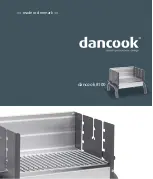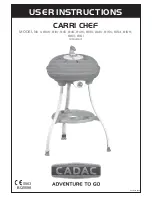
9
Crystalline silica from bricks, cement and other masonry products.
Arsenic and chromium from chemically-treated lumber.
2.31
Your risk from these exposures varies, depending on how often you do this type of
work.
2.32
To reduce your exposure to these chemicals, work in a well ventilated area and work
with approved safety equipment, such as dust masks that are specially designed to
filter out microscopic particles.
2.33
Even when the tool is used as described, it is not possible to eliminate all residual risk
factors. The following hazards may arise in connection with the tools construction and
design:
Damage to the lungs if an effective dust mask is not worn.
Damage to hearing if effective hearing protection is not worn.
2.34
To ensure the longest battery life and best battery performance, always charge the
battery when the temperature is between 18-24°C.
2.35
Do not charge the battery pack when the temperature is below 0°C or above 40°C.
This is important. Failure to observe this safety rule could cause serious damage to the
battery pack.
2.36
Do not incinerate the battery pack, even if it is seriously damaged or can no longer hold
a charge. The battery pack could explode in a fire.
2.37
A small leakage from the battery pack may occur under extreme usage or temperature.
This does not necessarily indicate a failure of the battery pack.
However if the outer seal is broken and this leakage comes into contact with your skin:
Wash the affected area quickly with soap and water.
Neutralise the liquid with a mild acid such as lemon juice or vinegar.
Flush eyes with clean water for a minimum of 10 minutes and seek immediate medical
attention.
2.38
Never attempt to open a battery pack for any reason. If the plastic housing of the battery
pack breaks open or cracks, immediately discontinue its use and do not recharge it.
2.39
Do not store or carry a spare battery pack in a pocket or toolbox or any other place
where it may come in to contact with metal objects. The battery pack may be short
circuited causing damage to the battery pack, burns or fire.
2.40
If storing the battery pack, cover the terminals with a heavy insulation tape.
2.41
Batteries stored for a long period will discharge their charge.
2.42
Do not store or use the battery pack in locations where the temperature may reach or
exceed 40°C.
2.43
Allow the battery pack to cool down after charging. Do not place in a hot environment or
direct sunlight.










































